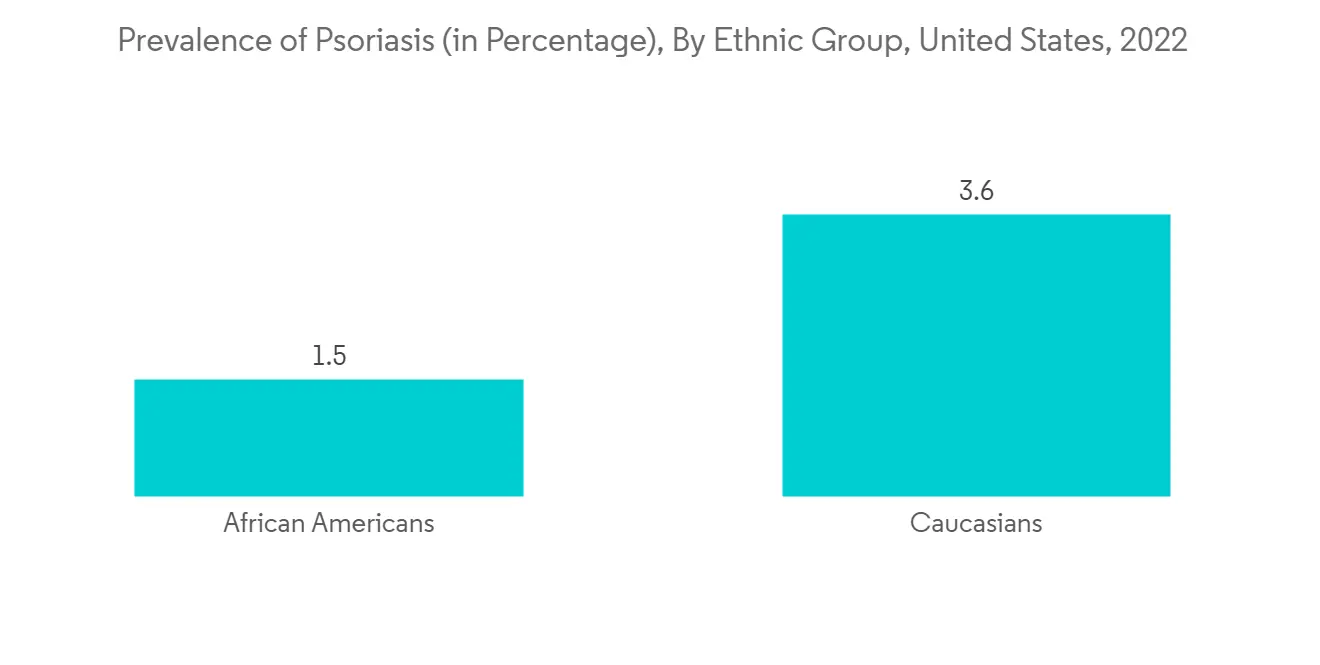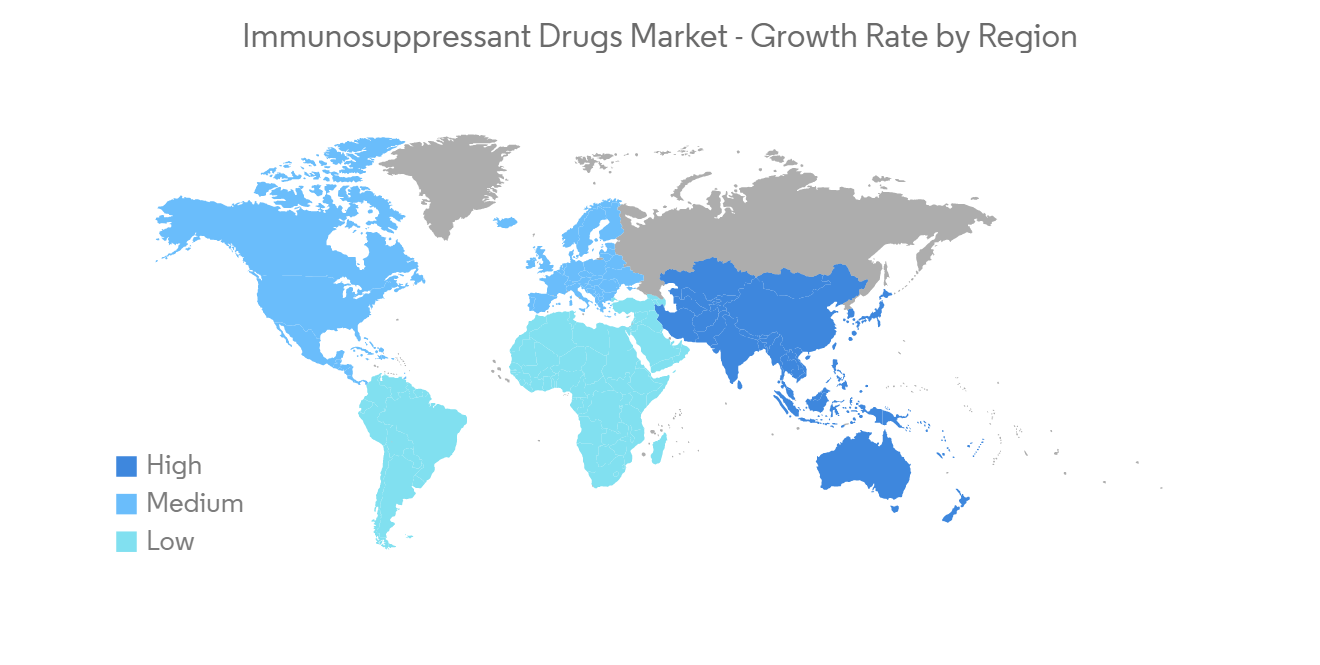 |
市場調査レポート
商品コード
1273360
免疫抑制剤市場- 成長、動向、予測(2023年-2028年)Immunosuppressant Drugs Market - Growth, Trends, and Forecasts (2023 - 2028) |
||||||
● お客様のご希望に応じて、既存データの加工や未掲載情報(例:国別セグメント)の追加などの対応が可能です。 詳細はお問い合わせください。
| 免疫抑制剤市場- 成長、動向、予測(2023年-2028年) |
|
出版日: 2023年04月14日
発行: Mordor Intelligence
ページ情報: 英文 110 Pages
納期: 2~3営業日
|
- 全表示
- 概要
- 目次
免疫抑制剤市場は、予測期間中に4.6%のCAGRで推移すると予想されています。
COVID-19のパンデミックは、市場に大きな影響を及ぼしました。例えば、2022年4月にPubMed Centralが発表した論文によると、最初のパンデミック時に移植活動が世界的に16%減少し、待機患者への影響が大きくなりました。臓器移植の減少は、免疫抑制剤の使用量の減少も意味しました。しかし、パンデミックが沈静化した現在、研究対象市場は成長すると予想されます。
自己免疫疾患の有病率の増加、臓器移植の増加、組織工学や臓器移植の技術的進歩などの要因が、市場の成長を促進すると予想されます。
自己免疫疾患の有病率の増加は、市場の成長を高めると予想される主要な要因です。例えば、2022年4月にNCBIが更新した記事によると、世界で約250万人が多発性硬化症にかかっており、この記事には、女性は男性に比べて3倍発症しやすいとも書かれています。
さらに、2022年7月にMDPIが発表した記事によると、関節リウマチ(RA)は、慢性、対称性、進行性の多関節炎を主な症状とし、世界の頻度は0.3~1.0%とされる一般的な自己免疫疾患とされています。このため、RAに対する免疫抑制剤の採用が増加し、市場成長の原動力となります。
また、製品承認も市場成長の大きな要因となっています。例えば、2022年2月、中国の国家医療製品管理局(NMPA)は、グラクソ・スミスクラインのベンリスタを、中国で活動性ループス腎炎(LN)の成人患者の治療薬として承認しました。
成長が期待される一方で、厳しい規制プロセスが市場成長の妨げになると予想されます。
免疫抑制剤の市場動向
予測期間中、全身性自己免疫疾患セグメントが大きな市場シェアを占めると予想される
全身性自己免疫疾患は、自己抗原が体内のほぼすべての種類の細胞、例えばDNAやタンパク質複合体などに存在する疾患です。その結果、病的な損傷は多くの異なる臓器や組織を巻き込みます。関節リウマチ、全身性エリテマトーデス、強皮症、乾癬、皮膚筋炎などの全身性自己免疫疾患の有病率の増加は、市場の成長を後押しすると期待されています。
2022年7月にMDPIが発表した記事によると、インドでは、関節リウマチの有病率は約0.7%で、約1,000万人がこの病気に苦しんでいます。関節リウマチの人はほとんどの日に疲労を感じ、70%以上が慢性疲労症候群に似た症状を経験しています。
さらに、2022年10月にAnnals of Rheumatic Diseasesが発表した論文によると、男性よりも女性の方が全身性エリテマトーデス(SLE)に罹患する可能性が高いとされています。さらにこの論文では、世界のSLE発症率と女性の新規診断人口は、それぞれ10万人年あたり8.82人(2.4~25.99人)、年間34万人と推定されると述べています。地域別では、女性のSLE発症率は中央アジアの10万人年当たり2.00人(0.27~6.22人)から中央欧州の10万人年当たり22.99人(5.35~53.28人)です。
さらに、市場参入企業による主要製品の発売も、セグメントの成長を後押しすると予想されます。例えば、2021年1月、FDAは、Aurinia Pharmaceuticals社が開発した活動性ループス腎炎の成人患者の治療を適応とする経口薬Lupkynis(ボクロスポリン)を承認しました。本薬は、免疫抑制剤として作用し、カルシニューリンに結合して阻害する、構造的に修飾された新規のカルシニューリン阻害剤です。

予測期間中、北米が市場で大きなシェアを占めると予想される
北米は、自己免疫疾患の有病率の増加と臓器移植件数の急増により、免疫抑制剤市場において大きなシェアを占めると予想されます。
同地域における自己免疫疾患の有病率の増加は、市場成長を促進する主要な要因であると予想されます。例えば、2022年5月に国立環境健康科学研究所が更新したデータによると、米国では、まとめて2,400万人以上が自己免疫疾患に罹患し、さらに800万人が自己抗体(自己免疫疾患の発症確率を示す血液分子)を持っていました。さらに、2021年12月にカナダ統計局が更新したデータによると、2021年にカナダで関節炎を患った人は608万7600人でした。
さらに、自己免疫疾患に関する研究費の増加は、これらの疾患を治療するための免疫抑制剤の開発を後押しするとも予想されます。例えば、NIHが2022年5月に更新したデータによると、米国では2021年に推定10億2,100万米ドルが自己免疫疾患の研究に費やされ、2022年には10億6,100万米ドルに上昇すると予想されています。
臓器移植の増加も市場成長に寄与する要因の一つです。例えば、2022年1月の臓器調達・移植ネットワークのデータによると、2021年に米国で行われた臓器移植は41,354件で、前年比5.9%増となり、初めて4万件を超えました。

免疫抑制剤産業の概要
免疫抑制剤市場は細分化されており、複数の主要プレイヤーで構成されています。市場シェアの面では、少数の主要プレイヤーが市場を独占しています。現在、市場を独占している企業には、Astellas Pharma, Inc、Sanofi(Genzyme), Bristol-Myers Squibb Company, Novartis AG, F. Hoffmann-La Roche Ltd, Pfizer Inc, GlaxoSmithKline Plc, Allergan Plc(Abbie), Accord Healthcare Ltd(Intas Pharmaceuticals), Viatris Inc.などがあります。
その他の特典:
- エクセル形式の市場予測(ME)シート
- 3ヶ月間のアナリストサポート
目次
第1章 イントロダクション
- 調査の前提条件と市場定義
- 本調査の対象範囲
第2章 調査手法
第3章 エグゼクティブサマリー
第4章 市場力学
- 市場概要
- 市場促進要因
- 自己免疫疾患の蔓延と臓器移植件数の増加
- 組織工学と臓器移植における技術的進歩
- 市場抑制要因
- 厳しい規制プロセス
- ポーターのファイブフォース分析
- 新規参入業者の脅威
- 買い手/消費者の交渉力
- 供給企業の交渉力
- 代替品の脅威
- 競争企業間の敵対関係
第5章 市場セグメンテーション(金額ベース市場規模-USD million)
- 薬剤クラス別
- カルシニューリン阻害剤
- 抗増殖剤
- mTOR阻害剤
- ステロイド剤
- その他の薬物クラス
- 用途別
- 自己免疫疾患
- 全身性自己免疫疾患
- 局所性自己免疫疾患
- 臓器移植
- その他のアプリケーション
- 自己免疫疾患
- 地域
- 北米
- 米国
- カナダ
- メキシコ
- 欧州
- ドイツ
- 英国
- フランス
- イタリア
- スペイン
- その他欧州
- アジア太平洋地域
- 中国
- 日本
- インド
- オーストラリア
- 韓国
- その他アジア太平洋地域
- 中東・アフリカ地域
- GCC
- 南アフリカ
- その他中東とアフリカ
- 南米
- ブラジル
- アルゼンチン
- その他南米地域
- 北米
第6章 競合情勢
- 企業プロファイル
- Accord Healthcare Ltd(Intas Pharmaceuticals)
- Allergan Plc(Abbvie)
- Astellas Pharma, Inc
- Bristol-Myers Squibb Company
- F. Hoffmann-La Roche Ltd
- GlaxoSmithKline Plc
- Janssen Pharmaceuticals, Inc(Johnson & Johnson)
- Viatris Inc.
- Novartis AG
- Pfizer Inc
- Veloxis Pharmaceuticals, Inc.(Asahi Kasei)
- Sanofi(Genzyme)
第7章 市場機会および将来動向
The immunosuppressant drugs market is expected to register a CAGR of 4.6% during the forecast period.
The COVID-19 pandemic had a significant effect on the market. For instance, according to an article published by PubMed Central in April 2022, there was a 16% global reduction in transplant activity during the initial pandemic, resulting in a substantial impact on the waitlisted patient. Reduced organ transplants meant a reduction in the usage of immunosuppressant drugs as well. However, as the pandemic has subsided, the studied market is expected to grow.
Factors such as the growing prevalence of autoimmune diseases, the rise in organ transplants, and technological advancements in tissue engineering and organ transplantations are expected to enhance the market growth.
The increasing prevalence of autoimmune diseases is a major factor that is expected to enhance the market growth. For instance, according to an article updated by the NCBI in April 2022, around 2.5 million people worldwide have multiple sclerosis, and the article also stated that females are three times more prone to develop the illness than males.
Furthermore, according to an article published by MDPI in July 2022, Rheumatoid arthritis (RA) is considered a common autoimmune illness that manifests majorly as chronic, symmetric, and progressive polyarthritis with a global frequency of 0.3-1.0%. This will lead to increased adoption of immunosuppressant drugs for RA, driving market growth.
Product approval is another major factor for market growth. For instance, in February 2022, China's National Medical Products Administration (NMPA) approved GlaxoSmithKline's Benlysta for the treatment of adult patients with active lupus nephritis (LN) in China.
While growth is expected, stringent regulatory processes are expected to hinder the market growth.
Immunosuppressant Drugs Market Trends
The Systemic Autoimmune Disease Segment is Expected to Hold a Significant Market Share Over the Forecast Period
Systemic autoimmune diseases are those where autoantigens can be found in almost any type of cell in the body, for example, DNA or protein complexes. As a result, pathological damage involves many different organs and tissues. The increasing prevalence of systemic autoimmune diseases such as rheumatoid arthritis, systemic lupus erythematosus, scleroderma, psoriasis, and dermatomyositis are expected to boost market growth.
According to an article published by MDPI in July 2022, in India, the prevalence of Rheumatoid Arthritis was around 0.7%, with almost 10 million persons suffering from the disease. People with rheumatoid arthritis experience fatigue on most days, with over 70% experiencing symptoms similar to chronic fatigue syndrome.
Furthermore, according to an article published by the Annals of Rheumatic Diseases in October 2022, women were more likely to have systemic lupus erythematosus (SLE) than men. The article further stated that the global SLE incidence and newly diagnosed population in women are estimated to be 8.82 (2.4 to 25.99) per 100,000 person-years and 0.34 million annually, respectively. At the regional level, the incidence of SLE in women varied from 2.00 (0.27 to 6.22) per 100,000 person-years in central Asia to 22.99 (5.35 to 53.28) per 100,000 person-years in central Europe.
Moreover, key product launches by market players are also expected to boost segment growth. For instance, in January 2021, FDA approved Lupkynis (voclosporin), an oral drug that is indicated for the treatment of adult patients with active lupus nephritis developed by Aurinia Pharmaceuticals. It is a novel, structurally modified calcineurin inhibitor that acts as an immunosuppressant and binds and inhibits calcineurin.

North America is Expected to Hold a Significant Share in the Market Over the Forecast Period
North America is expected to hold a significant market share in the immunosuppressant drugs market due to the increasing prevalence of autoimmune diseases and the rapid rise in the number of organ transplants in this region.
The increasing prevalence of autoimmune diseases in the region is a major factor that is expected to drive market growth. For instance, according to data updated by the National Institute of Environmental Health Sciences in May 2022, collectively autoimmune diseases affected more than 24 million people in the United States, and an additional eight million people had auto-antibodies, blood molecules that indicate a person's chance of developing autoimmune disease. Moreover, according to data updated by Statistics Canada in December 2021, 6,087,600 people had arthritis in Canada in 2021.
Furthermore, the rising research spending on autoimmune diseases is also expected to boost the development of immunosuppressant drugs to treat these diseases. For instance, according to data updated by NIH in May 2022, an estimated USD 1,021 million was spent on the research of autoimmune diseases in the United States in 2021, and was expected to rise to USD 1,061 million by 2022.
Increasing organ transplants are another factor contributing to the market growth. For instance, according to data from the Organ Procurement and Transplantation Network in January 2022, 41,354 organ transplants were performed in the United States in 2021, an increase of 5.9 percent over the last year, going over 40,000 for the first time.

Immunosuppressant Drugs Industry Overview
The immunosuppressant drugs market is fragmented and consists of several major players. In terms of market share, a few major players dominate the market. Some of the companies which are currently dominating in the market are Astellas Pharma, Inc, Sanofi (Genzyme), Bristol-Myers Squibb Company, Novartis AG, F. Hoffmann-La Roche Ltd, Pfizer Inc, GlaxoSmithKline Plc, Allergan Plc (Abbvie), Accord Healthcare Ltd (Intas Pharmaceuticals), and Viatris Inc. among others.
Additional Benefits:
- The market estimate (ME) sheet in Excel format
- 3 months of analyst support
TABLE OF CONTENTS
1 INTRODUCTION
- 1.1 Study Assumptions and Market Definition
- 1.2 Scope of the Study
2 RESEARCH METHODOLOGY
3 EXECUTIVE SUMMARY
4 MARKET DYNAMICS
- 4.1 Market Overview
- 4.2 Market Drivers
- 4.2.1 Growing Prevalence of Autoimmune Diseases and Rise in the Number of Organ Transplants
- 4.2.2 Technological Advancements in Tissue Engineering and Organ Transplantations
- 4.3 Market Restraints
- 4.3.1 Stringent Regulatory Processes
- 4.4 Porter's Five Forces Analysis
- 4.4.1 Threat of New Entrants
- 4.4.2 Bargaining Power of Buyers/Consumers
- 4.4.3 Bargaining Power of Suppliers
- 4.4.4 Threat of Substitute Products
- 4.4.5 Intensity of Competitive Rivalry
5 MARKET SEGMENTATION (Market Size by Value - USD million)
- 5.1 By Drug Class
- 5.1.1 Calcineurin Inhibitors
- 5.1.2 Antiproliferative Agents
- 5.1.3 mTOR Inhibitor
- 5.1.4 Steroids
- 5.1.5 Other Drug Classes
- 5.2 By Application
- 5.2.1 Autoimmune diseases
- 5.2.1.1 Systemic Autoimmune Disease
- 5.2.1.2 Localized Autoimmune Disease
- 5.2.2 Organ transplant
- 5.2.3 Other Applications
- 5.2.1 Autoimmune diseases
- 5.3 Geography
- 5.3.1 North America
- 5.3.1.1 United States
- 5.3.1.2 Canada
- 5.3.1.3 Mexico
- 5.3.2 Europe
- 5.3.2.1 Germany
- 5.3.2.2 United Kingdom
- 5.3.2.3 France
- 5.3.2.4 Italy
- 5.3.2.5 Spain
- 5.3.2.6 Rest of Europe
- 5.3.3 Asia-Pacific
- 5.3.3.1 China
- 5.3.3.2 Japan
- 5.3.3.3 India
- 5.3.3.4 Australia
- 5.3.3.5 South Korea
- 5.3.3.6 Rest of Asia-Pacific
- 5.3.4 Middle East and Africa
- 5.3.4.1 GCC
- 5.3.4.2 South Africa
- 5.3.4.3 Rest of Middle East and Africa
- 5.3.5 South America
- 5.3.5.1 Brazil
- 5.3.5.2 Argentina
- 5.3.5.3 Rest of South America
- 5.3.1 North America
6 COMPETITIVE LANDSCAPE
- 6.1 Company Profiles
- 6.1.1 Accord Healthcare Ltd (Intas Pharmaceuticals)
- 6.1.2 Allergan Plc (Abbvie)
- 6.1.3 Astellas Pharma, Inc
- 6.1.4 Bristol-Myers Squibb Company
- 6.1.5 F. Hoffmann-La Roche Ltd
- 6.1.6 GlaxoSmithKline Plc
- 6.1.7 Janssen Pharmaceuticals, Inc (Johnson & Johnson)
- 6.1.8 Viatris Inc.
- 6.1.9 Novartis AG
- 6.1.10 Pfizer Inc
- 6.1.11 Veloxis Pharmaceuticals, Inc. (Asahi Kasei)
- 6.1.12 Sanofi (Genzyme)
